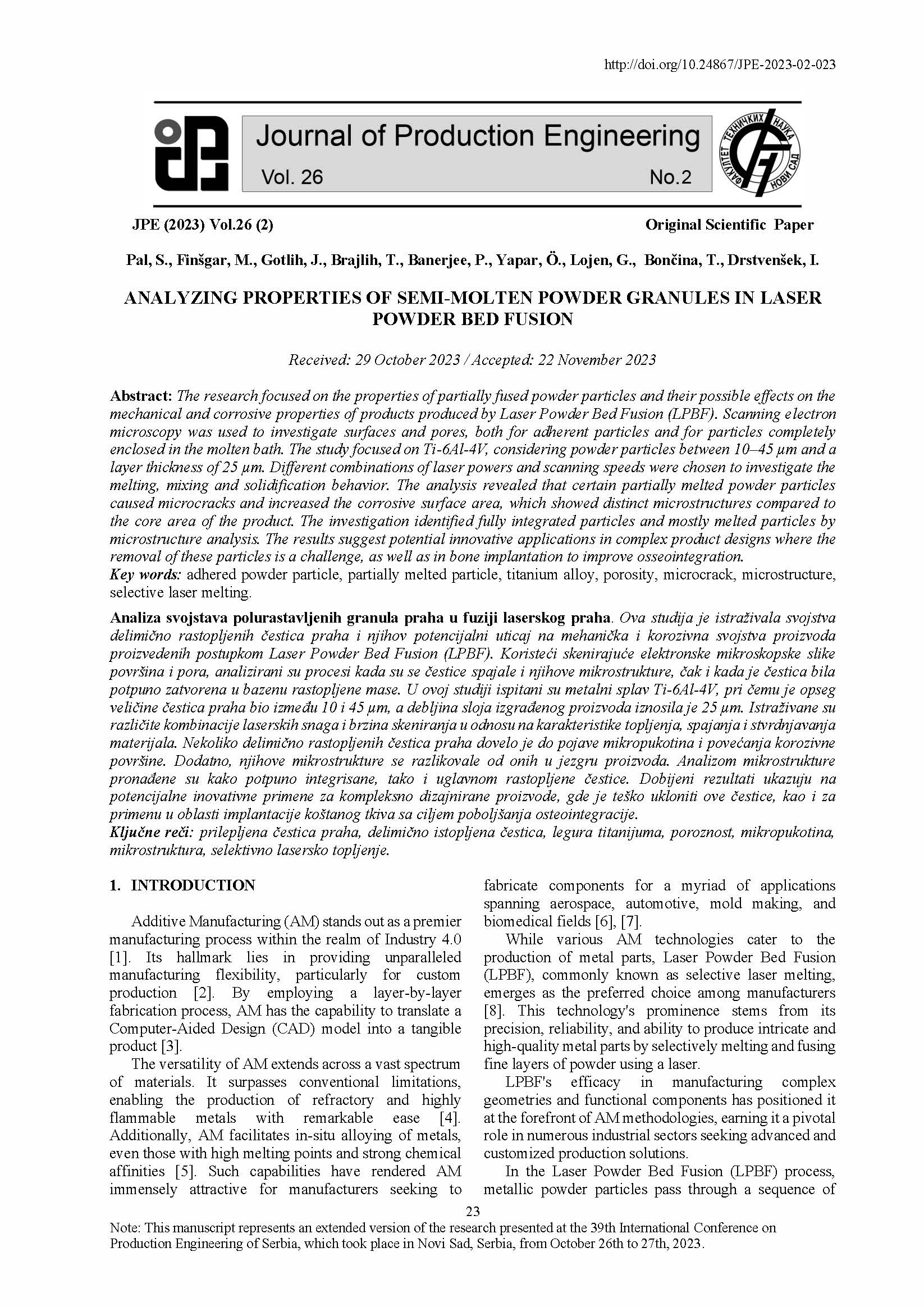Analyzing properties of semi-molten powder granules in laser powder bed fusion

Published 2023-11-22
abstract views: 272 // FULL TEXT ARTICLE (PDF): 348
Keywords
- adhered powder particle,
- partially melted particle,
- titanium alloy,
- porosity,
- microcrack
- microstructure,
- selective laser melting ...More
How to Cite
Copyright (c) 2023 Journal of Production Engineering

This work is licensed under a Creative Commons Attribution 4.0 International License.
Abstract
The research focused on the properties of partially fused powder particles and their possible effects on the mechanical and corrosive properties of products produced by Laser Powder Bed Fusion (LPBF). Scanning electron microscopy was used to investigate surfaces and pores, both for adherent particles and for particles completely enclosed in the molten bath. The study focused on Ti-6Al-4V, considering powder particles between 10–45 µm and a layer thickness of 25 µm. Different combinations of laser powers and scanning speeds were chosen to investigate the melting, mixing and solidification behavior. The analysis revealed that certain partially melted powder particles caused microcracks and increased the corrosive surface area, which showed distinct microstructures compared to the core area of the product. The investigation identified fully integrated particles and mostly melted particles by microstructure analysis. The results suggest potential innovative applications in complex product designs where the removal of these particles is a challenge, as well as in bone implantation to improve osseointegration.

